The duties and the life of bees on the wax comb, with description of uses as a multipurpose storage unit. It is hexagonal in shape and called cells.
Life on the Wax Comb
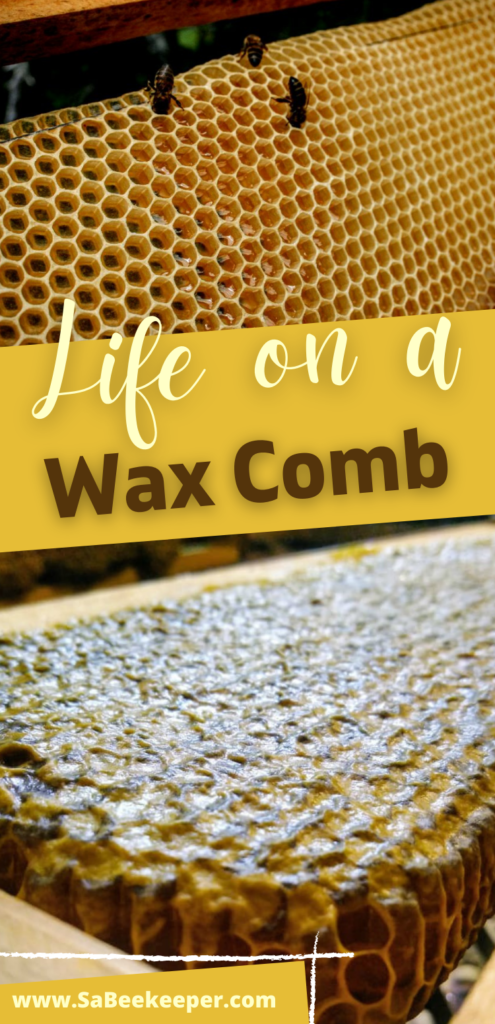
The cells are formed into this hexagonal shape, some say, its as the wax hangs on the frame and it forms a hexagonal pattern. Its not that the bees made this pattern.
Below. Well formed new wax comb with a little nectar.
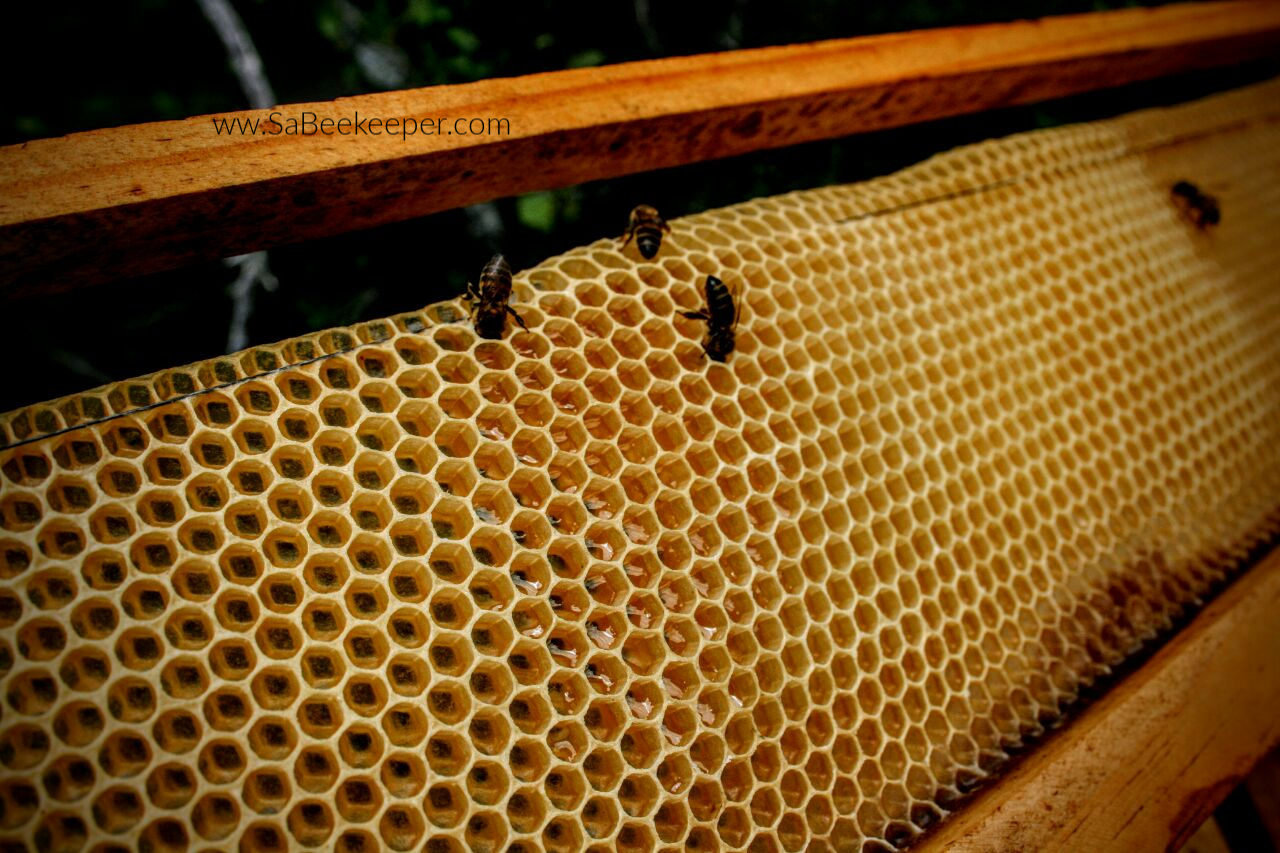
The beekeeper makes frames then fits the frames with new sheets of wax or starter wax pieces.
The bees form a comb in a manner that makes it easy to work with, in a hive. For replacement and harvesting.
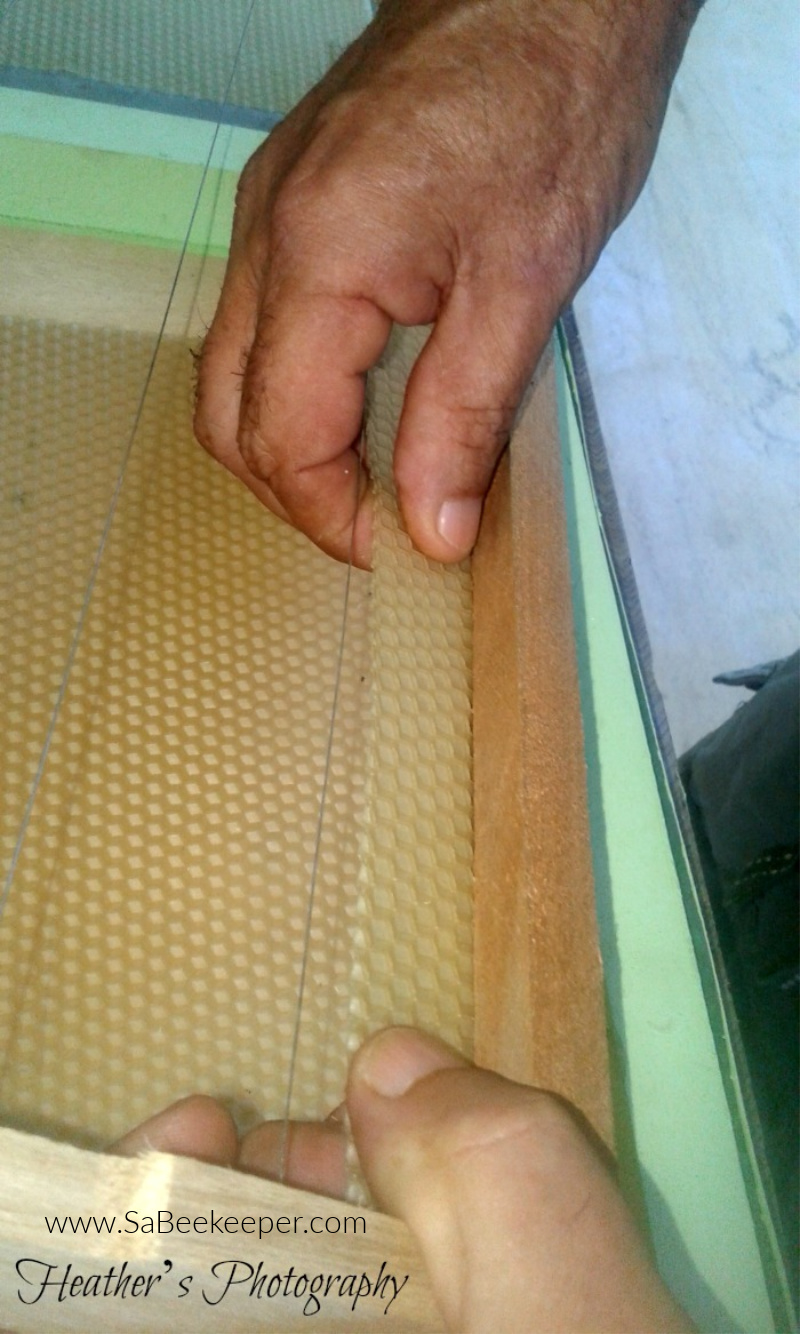
Storage of Nectar and Pollen and laying of eggs.
Food is stored in these cells. Queen starts to lay eggs in the center of the comb and the center of the hive.
The nurse bees feed the larvae or young bees daily in the cells.
Learn what is fed to the young larvae and how they feed the young bee.
Below…..Eggs laid in cells. Learn from the life cycle of the honey bee .
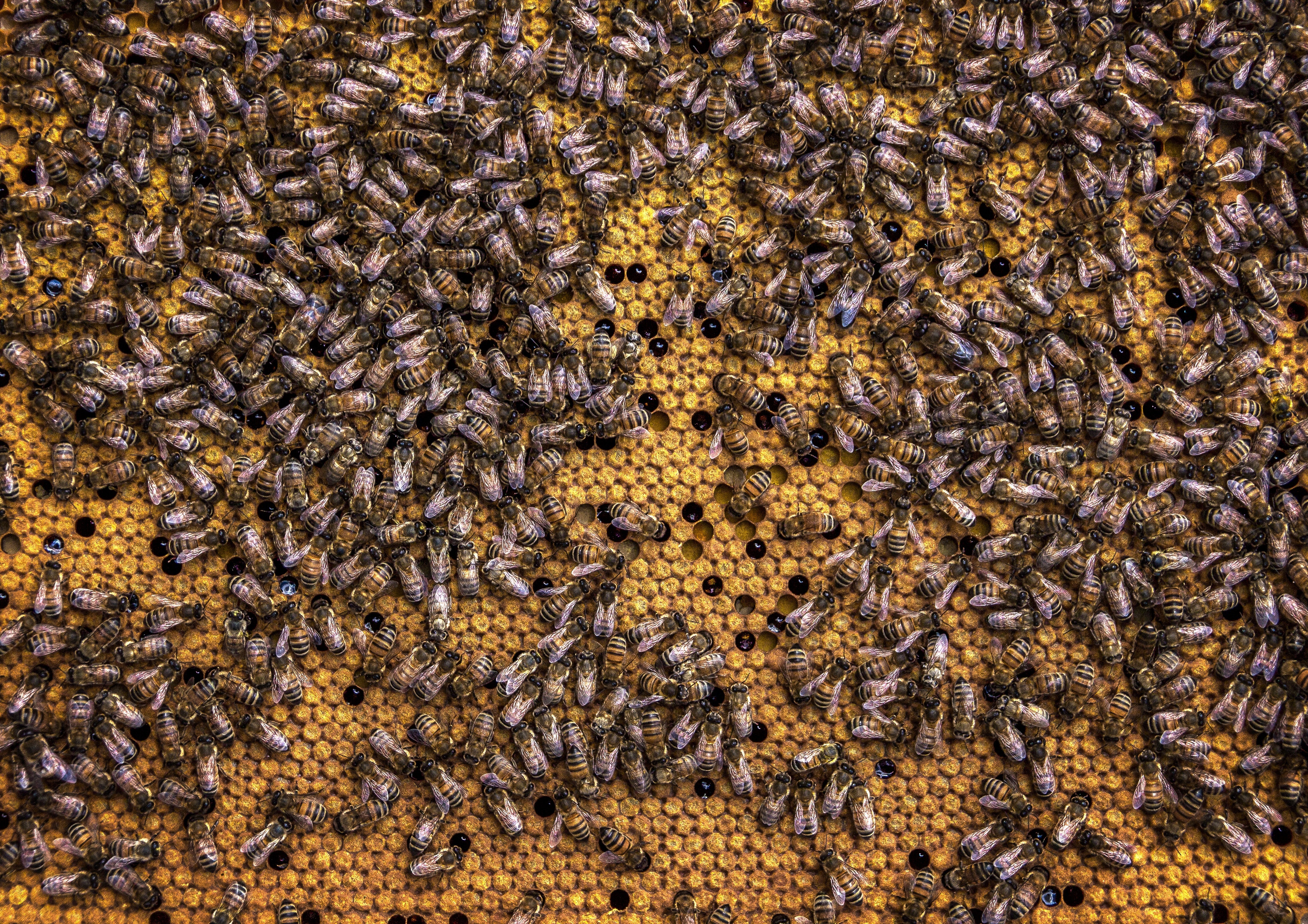
Pollen
When pollen is available it is stored on the outer edges of the comb. Packed tightly into the cells for hygienic purposes.
While nectar is stored in the cells on the inside. Except when eggs are laid.
The Pollen is not an ingredient of honey, but is stored in the cells for food. Pollen contains protein, vitamins and trace elements, that are very important for larvae and their development.
It is such an essential food for the developing bees, either in the form of royal jelly or mixed with honey.
The color of pollen varies from the color of the plant.
The bees collect the pollen on their legs in what is called a basket from the hairs on the bees legs.
Below ,white pollen on the legs
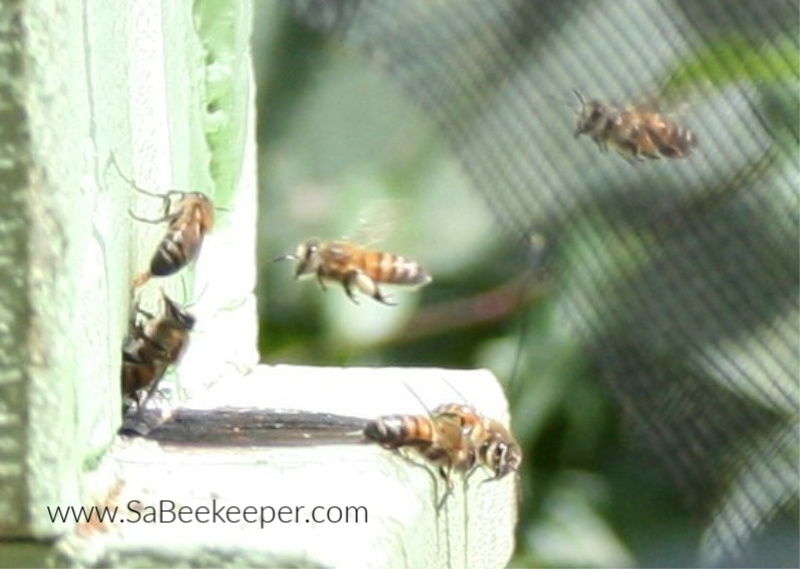
Orange pollen on legs of the bees. The forager.
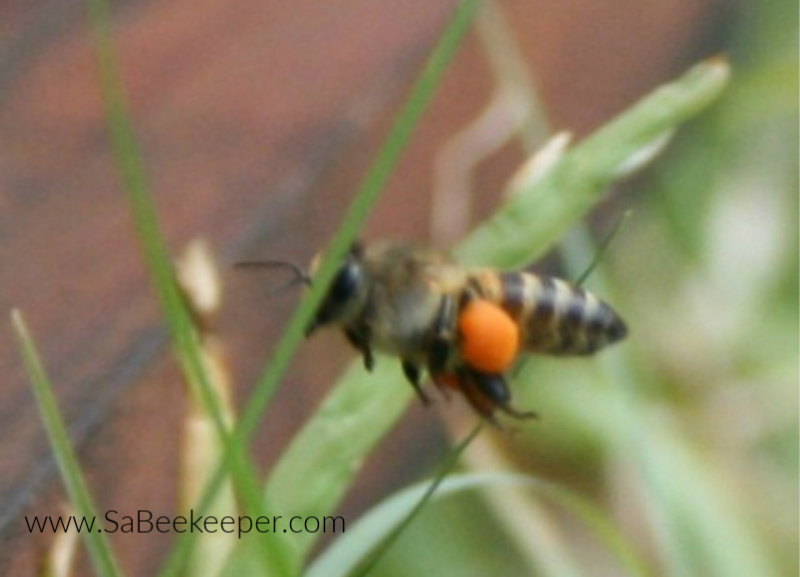
Nectar to honey.
Hive worker bees collect nectar from the forager bees. The bee regurgitate the nectar
themselves until it evaporates down to the right concentration in the cells.
Below, honey or nectar in the cells. Note the larger formed cell is the creation of a new queen bee.

Then when the nectar is fully regurgitated to honey in the cell, the worker bee seals and covers the honey cell with a thin layer of wax cap. For storage.
Storage of food
Below. Wax capped comb.
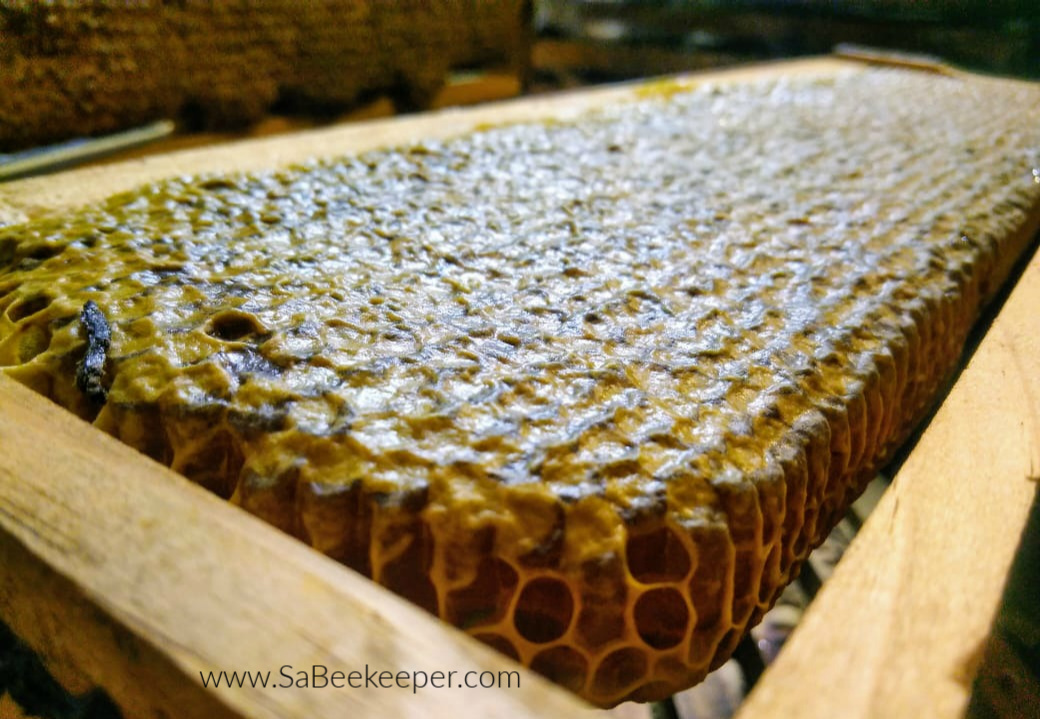
The honey color will also vary from plant to plant, for instance the blue gum honey (eucalyptus tree) is a dark color and is the most delicious. Orange blossoms are more yellow honey in color.
The honey from canola flower is cream in color and very creamy.
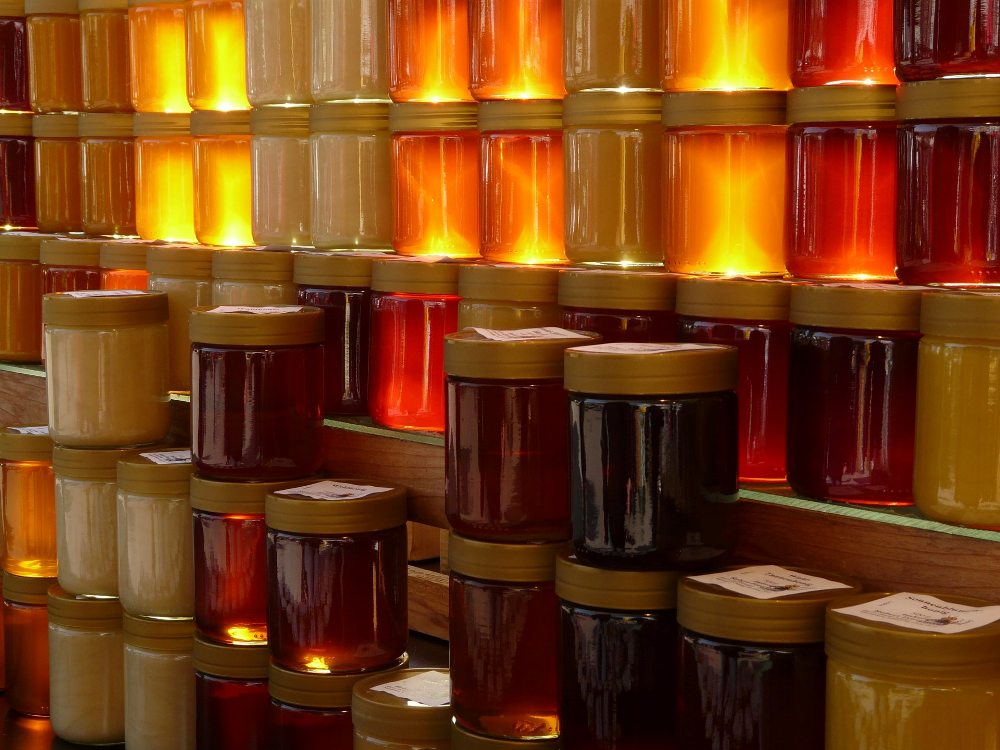
The combs are filled with food for storage in the winter and when there is brood to look after.
The beekeeper will use what we call a super, which is a shallower extra box placed on top of the
brood box with 10 wax frames in. These are normally used for their extra honey storage.
That is what is taken by the beekeeper for honey harvest.
Below. The bigger box at the bottom is known as the brood box and a super with removable lid on top.
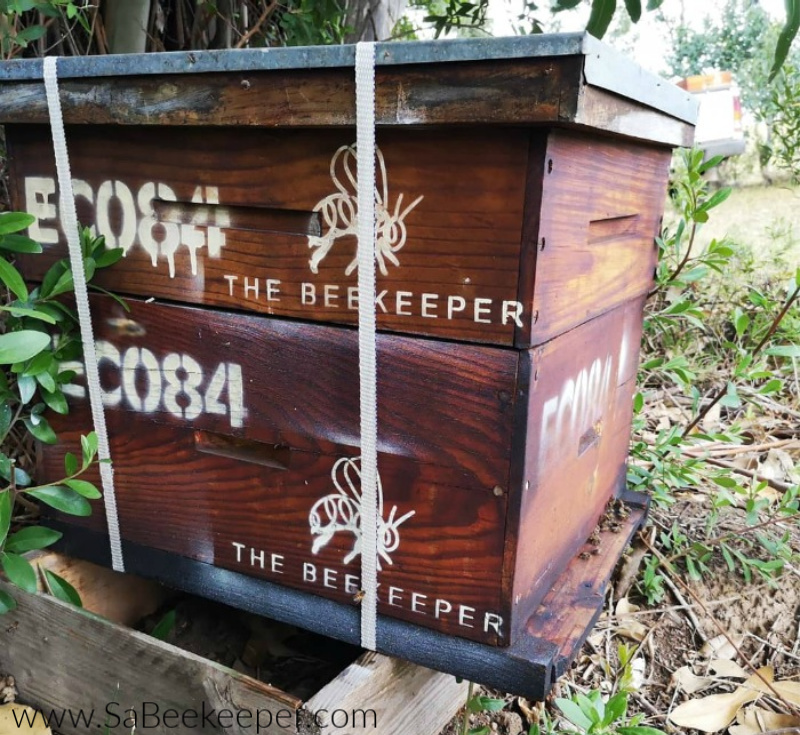
The brood box frames are very rarely taken for honey harvest. That the food storage for the brood, and egg laying space for the queen bee.
Only when you need to check that the brood box combs are in good order and if there is a need for some combs to be renewed.
A yearly check should be good. One needs to keep an eye on the combs and the brood, for best results and their health of the hive.
More posts about the combs
Leave a Reply